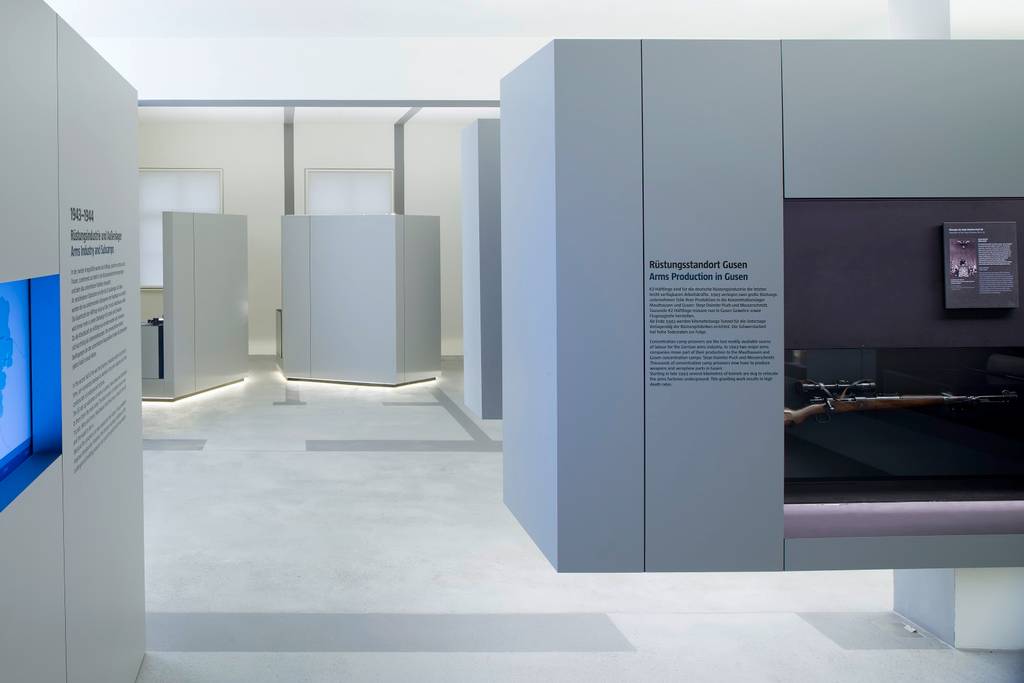The Mauthausen Concentration Camp 1938–1945
Permanent exhibition

The exhibition ‘The Mauthausen Concentration Camp 1938–1945’ offers an overview of the history of the Mauthausen concentration camp and its subcamps. It is located in a historical camp building, the former ‘Krankenrevier’ or ‘infirmary’, where sick prisoners were treated from summer 1944 onwards. First adapted for use as a museum in the 1960s, in 2010/11 it was remodelled to meet the needs of the current exhibition. The original structure was largely preserved or made visible again and was incorporated into the exhibition concept and architecture.
The exhibition presents the history of the Mauthausen/Gusen concentration camp during four time periods and on three thematic levels. The central corridor offers a condensed framework narrative of the development of National Socialism and the course of the war. Running parallel to this, a second level portrays the history of the camp’s development between 1938 and 1945. This structural history is placed against a third level which focuses on the experience of concentration camp imprisonment from the prisoners’ perspective. This presentation of the camp’s history is preceded by a ‘Prologue/Epilogue’, which looks at the aftereffects of the Mauthausen concentration camp on the survivors and their relatives, as well as on postwar Austrian history.
The history of the concentration camp is told through more than 100 original objects. In addition, the voices of those who survived the camp are heard in some 30 video and audio interviews, as well as those of residents of area around the concentration camp. Four animations depict key developments in the camp’s history, from the expansion of the camp and the growing number of prisoners to the establishment of the subcamps and the evacuation transports towards the end of the war.